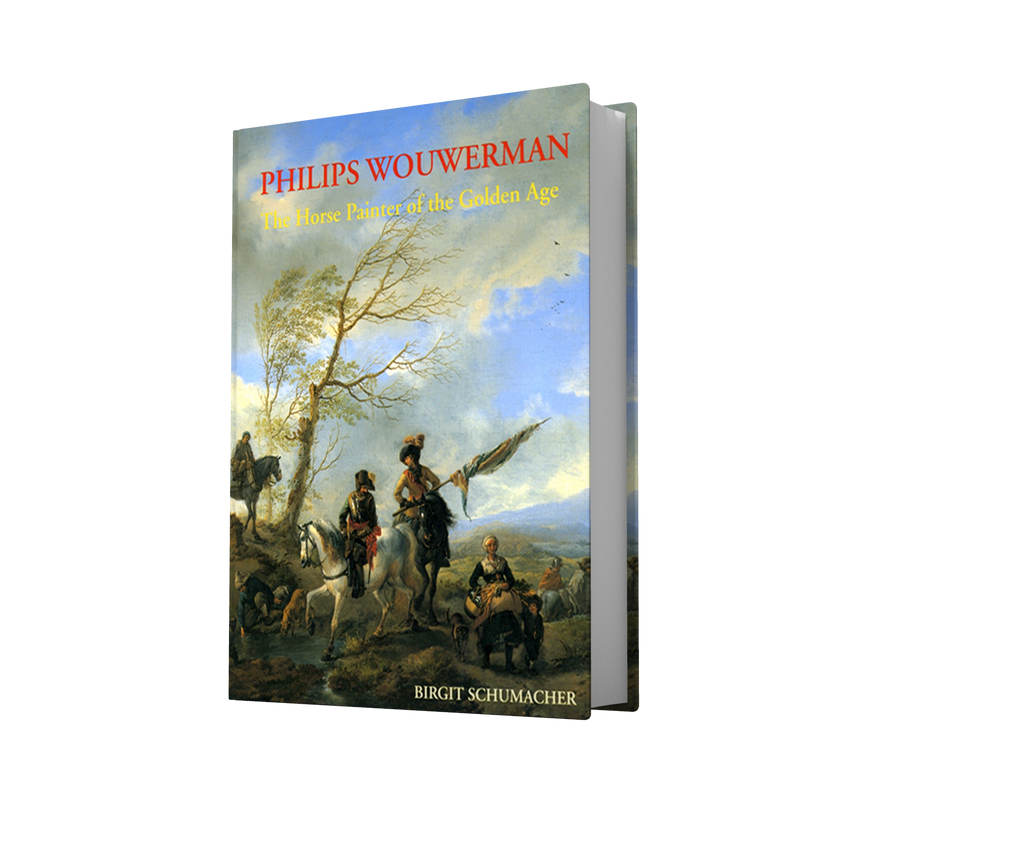
PHILIPS WOUWERMAN - The Horse Painter of the Golden Age
aetas aurea xx
Birgit Schumacher
2006. 2 vols. in-4to. An introductory text in 6 chapters of 164 pages followed by a catalogue raisonné of 488 pages, comprising authenticated, attributed, rejected works in public collections, and lost works; followed by 112 pp. consisting of bibliographies, concordance and indexes; 795 illustrations from which 100 plates in colour and 86 comparative figures. Cloth bound with dustjacket
ISBN 90 70288 67 2
Philips Wouwerman (1619-1668) was one of the most versatile and prolific artists of the Dutch Golden Age. Embedded in the artistic environment and tradition of his home town of Haarlem, Wouwerman made an important and highly influential contribution to the canon of seventeenth-century Dutch painting.
He started his artistic career with simple depictions of everyday life in the tradition of the Bamboccianti, and over the next twenty years developed an individual style, treating a wide range of subjects. In their elegant and picturesque refinement, his paintings - especially those made after 1650 portray the pastimes of various segments of Dutch society and clearly anticipate the rococo period. It is therefore easy to understand why in the eighteenth and nineteenth centuries collectors all over Europe considered Wouwerman to be one of the most important Dutch painters. However, the factors that were responsible for Wouwerman's popularity were the very ones that caused his decline when a new interpretation of the Dutch Golden Age, based on realism, set new standards around the mid-nineteenth century. Though collectors of all times have always admired and loved his art, nowadays Wouwerman is known only to a select circle of museum curators, collectors and connoisseurs.
Yet his skills are legendary as regards the depiction of horses of all breeds seen in motion, and the masterpieces from his best period (around 1650/60) are of indisputably high quality, beautifully combining imaginary southern landscapes and a typically Dutch atmosphere. His fine paintings displaying delicate, subdued colours, a hazy atmosphere and a wealth of witty, anecdotal detail are true gems which are still eagerly sought after.
The sheer number of paintings handed down to us, the fact that only a few of them are dated, as well as the spurious attribution to Wouwerman of many works actually made by his brothers, pupils and followers, have until now prevented the scholarly and aesthetic recognition that is his due.
This comprehensive study begins with a biography of the artist based on extensive archival research, followed by a detailed examination and critical analysis of his stylistic development and commentary on questions of iconography. Of particular importance, in light of Wouwerman's enormous output, is the discussion of the influence exerted by the art market and the taste of contemporary collectors on the content, form and style of his paintings.
Because of the approximately 2,000 attributed paintings which have flooded the art market (and bearing in mind that of the c. 800 original paintings that have survived, around 400 are to be found in private collections and on the art market), special attention has been paid to the question of authenticity. This study establishes criteria, based on the information supplied by detailed photographs of his work, by means of which Wouwerman's own handwriting can be explained. His oeuvre, cleansed of false attributions, is reduced to its original core and the contributions his studio made to his late work are also examined. Subsequent chapters deal with the posthumous fame of Wouwerman in the eighteenth and nineteenth centuries and with the changing reputation of the artist in the art-historical literature since the seventeenth century.
The exhaustive catalogue raisonné is divided into four parts: the first contains detailed information on accepted, verifiable paintings; the second comprises dubious attributions; the third and fourth part document the rejected works in public collections, as well as works that have been lost. The catalogue is complemented by comprehensive appendixes which contain a list of archival documents, indexes of owners, past and present, and a concordance with Hofstede de Groot's 1908 numbers. This lavishly illustrated reference book provides a basis for further research on the work of Philips Wouwerman.



